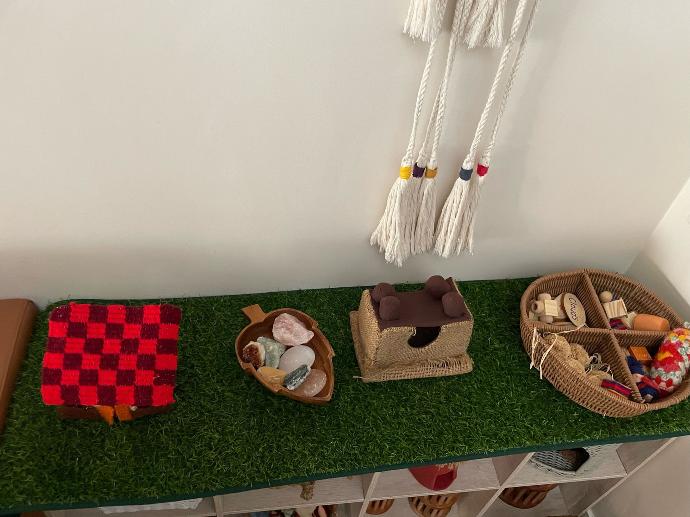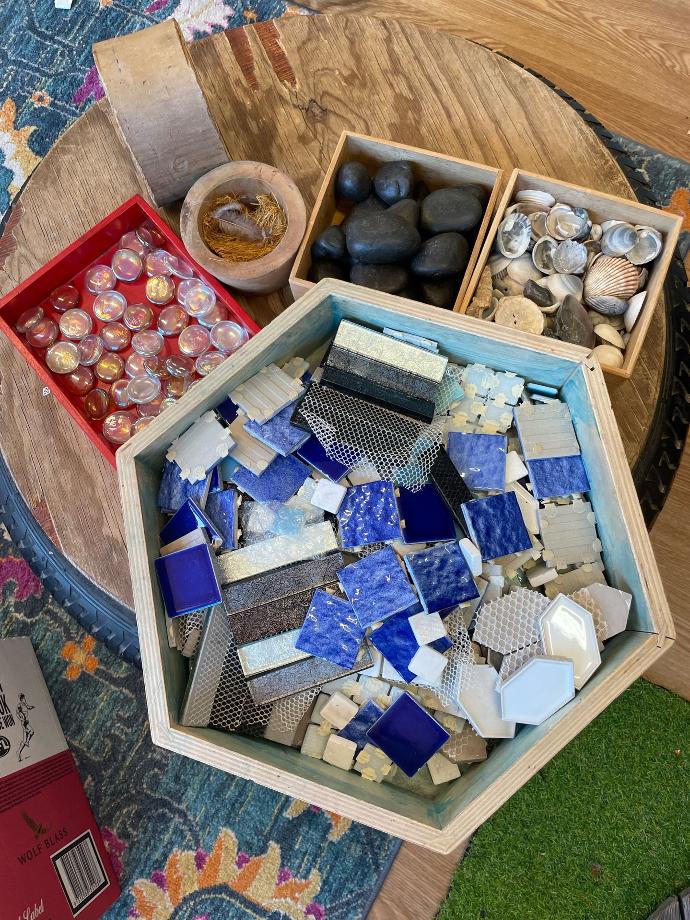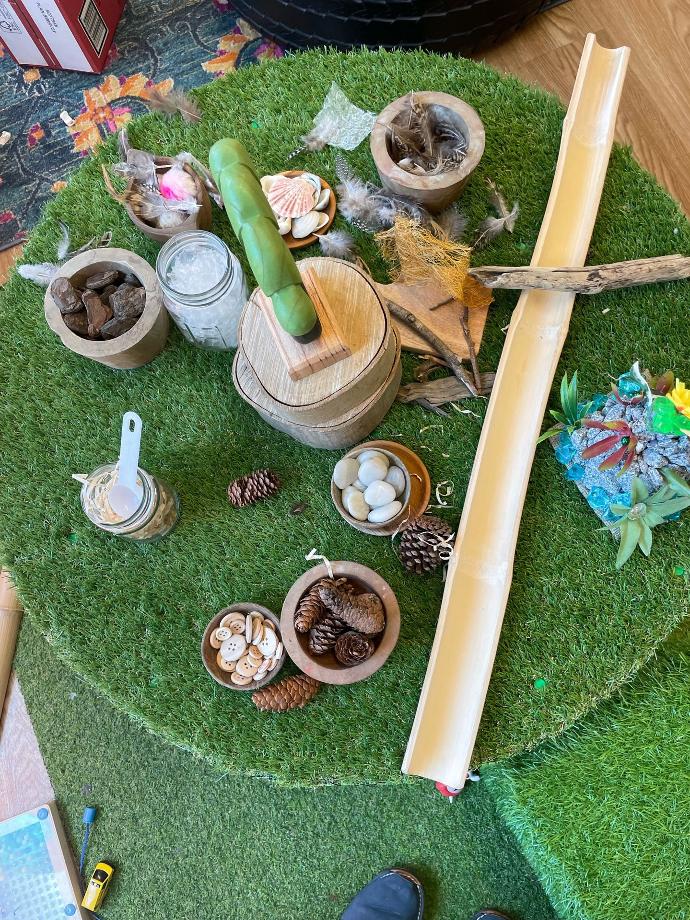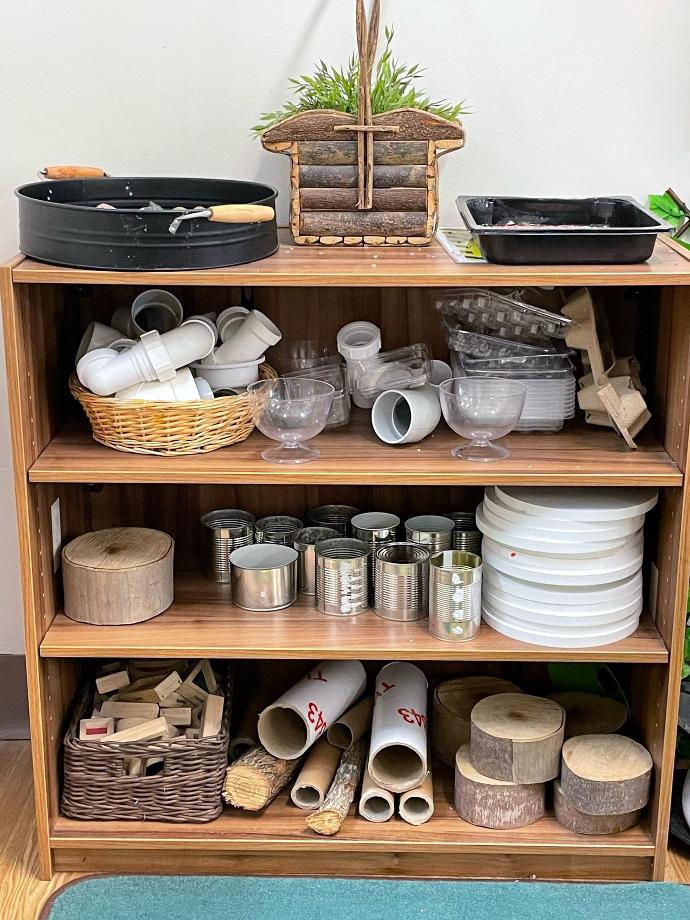Looking to boost curiosity and creativity in your classroom? Or maybe its collaborative problem solving, sustainability or resilience you’re prioritising for the children? Whatever your focus, it may be time to take a closer look at the role of loose parts in your learning environment.
The theory of loose parts, coined by architect Simon Nicholson back in 1972, describes how playing with everyday materials, rather than single-purpose toys, serves to light up children’s capacity for active and engaged play. The open-ended nature of loose parts (be they from the natural world - think stones, shells and wooden blocks - or manufactured things like curtain rings, packaging, clothes pegs, string and cups) serve to challenge and enrich children’s play with endless potential. In short: loose parts invite children to explore, move around, design and tinker with again and again; presenting infinitely more opportunities for creative engagement than static materials and environments.

Anyone who has ever given a gift only to see the young recipient play instead with the box it came in has witnessed the power of loose parts in action. They are irresistible sensory invitations! Framed intentionally and with regard for children’s agency, they can inspire intense creativity, persistence, problem solving and collaboration.
Related, though less focused on large loose parts and multiples of the same thing, is what Elinor Goldschmied described as heuristic play. We activate heuristic play when we offer babies and toddlers everyday items like kitchen utensils and a broad range of loose parts to explore in a safe, unhurried environment, stimulating similarly rich responses as we might come to expect from loose parts play.

There are more benefits afforded by this type of play though. Materials from the loose parts and heuristic play canon are typically gender neutral, culturally inclusive and sustainable – especially when we invite the families in our learning community to contribute. When children see the familiar packaging from home, the bag of autumn leaves from their walk through the park, or the fabric offcuts from their family scrap bag in their learning setting, it links their worlds and affirms their belonging. Loose parts can also transform the age-old Show and Tell into a rich opportunity for genuine dialogue.
Be prepared though. Loose parts are not to be put in a corner. They demand a central part in your room or garden and they will challenge your team to ongoing reflection.
Those limitless options for creative thinking, collaborative problem solving, negotiation, communication and cognitive flexibility will challenge and inspire the adults just as much as they do the children. For example, what are our definitions of ‘mess’? When is a loose part ‘finished’? What makes a space aesthetically pleasing and for whose eyes?
Loose parts can be tricky things for educators to embrace - perhaps it’s our tendency to value things that have greater monetary value, maybe it’s the ‘mess’ that typically ensues when children explore the properties of loose parts, or just savvy marketing that tells us a bought product is more valuable than the packaging or the free loose parts nature gifts us?
And yet, if teachers truly ‘touch the future’ (as Astronaut Christa McAuliffe suggested) what opportunities might loose parts and heuristic play afford the adults of tomorrow? If today’s children and tomorrow’s adults are to learn to do more with less and embrace sustainability with creative problem solving, it may be critical we prioritise opportunities for them to explore the properties of that cardboard box … or those pegs, shells, and pine cones!
Image Credits: Goodstart Shailer Park


